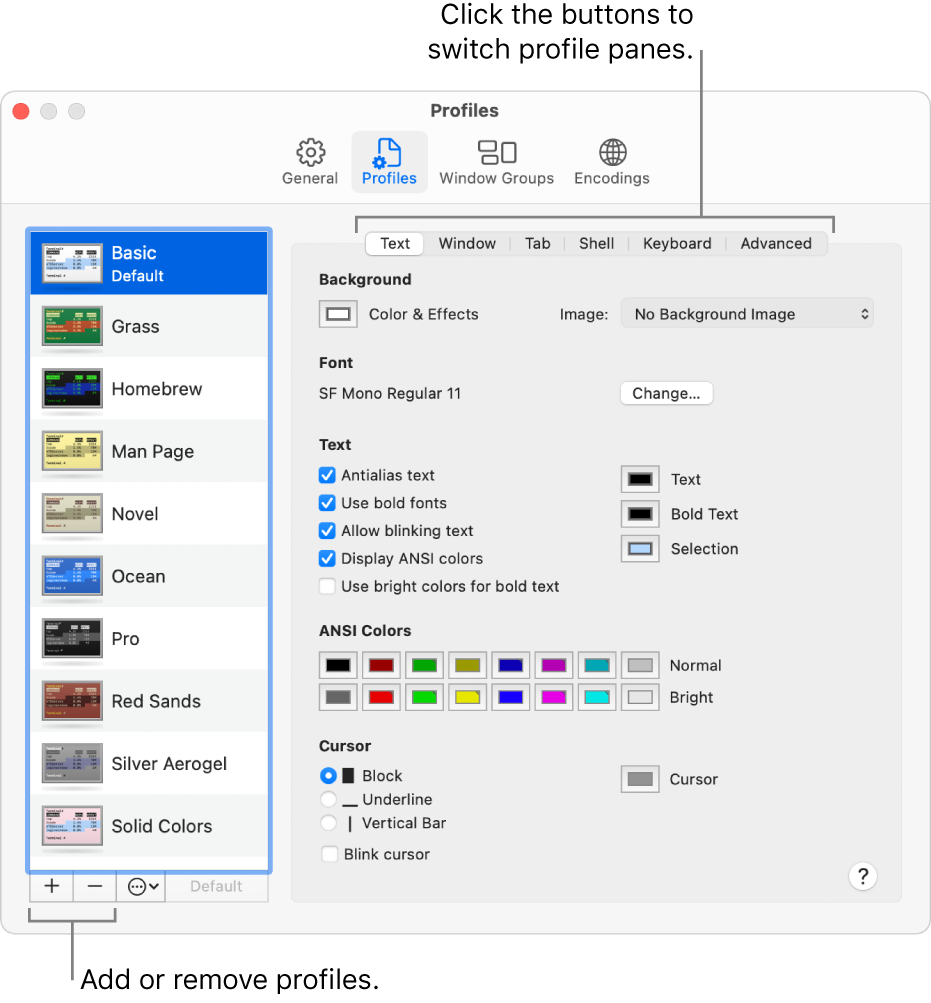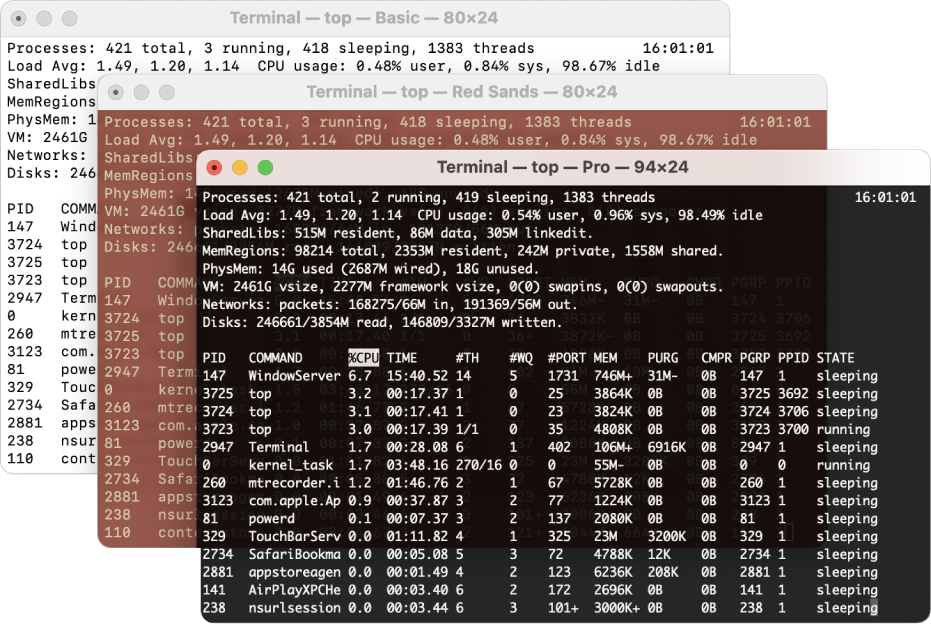

Terminal instances can be added by selecting the + icon on the top-right of the TERMINAL panel, selecting a profile from the terminal dropdown, or by triggering the ⌃⇧` (Windows, Linux Ctrl+Shift+`) command. Tip: Change the tabs location using the setting. Each terminal has an entry with its name, icon, color, and group decoration (if any). The terminal tabs UI is on the right side of the terminal view. There's a dedicated troubleshooting guide to help you with these sorts of problems.
#OSX TERMINAL SHORTCUT CODE#
Note: If you're having trouble launching your preferred shell in the integrated terminal, it may be due to your shell's configuration or a VS Code terminal setting.

You can learn more about configuring terminal shells in the terminal profiles section below. You can select other available shells to use in terminal instances or as the default such as Command Prompt on Windows, and zsh on macOS and Linux. The integrated terminal can use various shells installed on your machine, with the defaults being: Note: Open an external terminal with the ⇧⌘C (Windows, Linux Ctrl+Shift+C) keyboard shortcut if you prefer to work outside VS Code. You can create a new terminal via the Terminal menu with Terminal > New Terminal.From the Command Palette ( ⇧⌘P (Windows, Linux Ctrl+Shift+P)), use the View: Toggle Terminal command.Use the ⌃` (Windows, Linux Ctrl+`) keyboard shortcut with the backtick character.It provides integration with the editor to support features like links and error detection. Visual Studio Code includes a fully-featured integrated terminal that conveniently starts at the root of your workspace. Configure IntelliSense for cross-compiling.I’d say add them to my list of the five best Terminal commands you need to know about. Carbon > Interapplication Communication > Pasteboard Manager Reference.Īs you can see, these are some pretty powerful commands.


There are also several topics in the ADC Reference Library available to paid registered developers.
#OSX TERMINAL SHORTCUT HOW TO#
If you want to really brush up on how to use pbcopy and pbpaste, I recommend reading through man pbcopy in the Terminal. You can also specify what type of data to look for first in the pasteboard - plain text, rich text, or Encapsulated PostScript. For example, there are multiple Clibpoards, or pasteboards, that the Terminal commands can work with. The pbcopy and pbpaste commands are insanely powerful, and I’m not even fully fluent in the intricacies of making the most of them. Now I have a much more manageable text file it’s only six lines instead of 430. What if I wanted to fiilter it to certain processes? For that, I use grep alongside either pbcopy or pbpaste. When I ran that set of commands just now, it generated a 430-line text file. That’s all cool and stuff, but what about filtering through the data? Take a look at this. That would insert the contents of the Clipboard into a file called file.txt. The first is the easiest: pbcopy file.txt Those are copying text from a file, and redirecting output from a Terminal command. There are two main uses I have for pbcopy. If you want an easier method, pbcopy might just become your new best friend. You have to open the file in TextEdit, highlight the contents, and then use the Copy shortcut. If you’ve ever tried to easily get the contents of a text file into the Clipboard, you know what a hassle it can be.


 0 kommentar(er)
0 kommentar(er)
